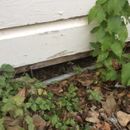Insulating & sealing a crawlspace with minimal headroom?
Hi Martin (et al), and thank you as always for the extremely helpful advice.
Based on articles on GBA, I’d like to encapsulate my crawlspace in Austin, TX (climate zone 2) to keep it drier and to prevent potentially moldy air from rising up into the living space. However, the house is on a hill, and the east side has minimal headroom, like just a few inches, which will make the work under the house exceptionally challenging. I’ve attached a picture where the skirting is missing and needs to be replaced, so you can see how little headroom we’re talking about. (And about the other defects in the picture, I’m aware than I need to remove the plants, scrape/paint the siding with lead-safe practices, and attach the electrical conduit to the wall.) So, what I’m pondering:
(1) I know I can put the foamboard on either the underside of the floor joists or on the crawlspace walls. I think on the walls is preferred because it keeps the walls themselves from getting moldy, though I don’t know if I really have a problem with that anyway. But does the lack of headroom indicate putting the foamboard in one place over the other?
(2) I’m imagining that putting the foamboard on the exterior of the skirting rather than inside the crawlspace would make access a whole lot simpler, but that would make my exterior wall wider and I don’t know how I’d get rain to divert over the foamboard rather than right on top of it. And if I cover the foamboard, I don’t know how I’d be able to check for termite tunneling.
(3) On page two of the comments to your article “Building an Unvented Crawlspace”, you said, “If the walls are smooth, you can insulate them with rigid foam.” But my walls are stucco skirting and not especially smooth. Why are smooth walls a requirement? I thought that if I had a whole wall of insulation with taped seams it wouldn’t matter how smooth or rough the wall is on the other side of the insulation? If smooth walls are important I could try to smooth them by troweling mortar onto them, except, again, there’s so little room to work to begin with….
(4) Since my crawlspace is really a CRAWLspace, I’d like to put down some cheap 1/8″ or 1/4″ polyethylene foam underlayment on the ground first, to make it more comfortable to crawl around on, then do my insulation and poly liner. I presume this wouldn’t cause any kind of problem, but it seems prudent to check with the expert first.
The house has an addition that’s sitting on a concrete slab, and the old and new parts of the house are physically connected to each other,, so jacking up the house to provide more access underneath isn’t really an option.
And in case you were going to mention it, I’m planning on installing a French drain along the east side of the house to prevent rain from running into the crawlspace.
GBA Detail Library
A collection of one thousand construction details organized by climate and house part










Replies
Michael,
I'm guessing that this isn't a true crawl space foundation (one with concrete walls). It's more of a house on a pier foundation surrounded by a skirt. For more information of the distinction I'm making, see this article: Crawl Spaces vs. Skirts.
The standard way to solve the problem of insufficient head room in a crawl space is to excavate -- that is, to lower the dirt floor. This is usually done by the lowest-paid member of the construction team. You use an entrenching tool (an army-surplus shovel) and drywall mud buckets.
If you are insulating a bumpy wall with rigid foam, you can use rigid foam if you want, as long as you can figure out a way to keep the system airtight over the long haul. Otherwise, use closed-cell spray polyurethane foam.